 "ttyymmnn" (ttyymmnn)
"ttyymmnn" (ttyymmnn)
03/12/2019 at 12:35 • Filed to: wingspan, Planelopnik, TDIAH
 4
4
 8
8
 "ttyymmnn" (ttyymmnn)
"ttyymmnn" (ttyymmnn)
03/12/2019 at 12:35 • Filed to: wingspan, Planelopnik, TDIAH |  4 4
|  8 8 |
!!! UNKNOWN CONTENT TYPE !!!
Welcome to
This Date in Aviation History
, getting of you caught up on milestones, important historical events and people in aviation from March 9 through March 12.
!!! UNKNOWN CONTENT TYPE !!!
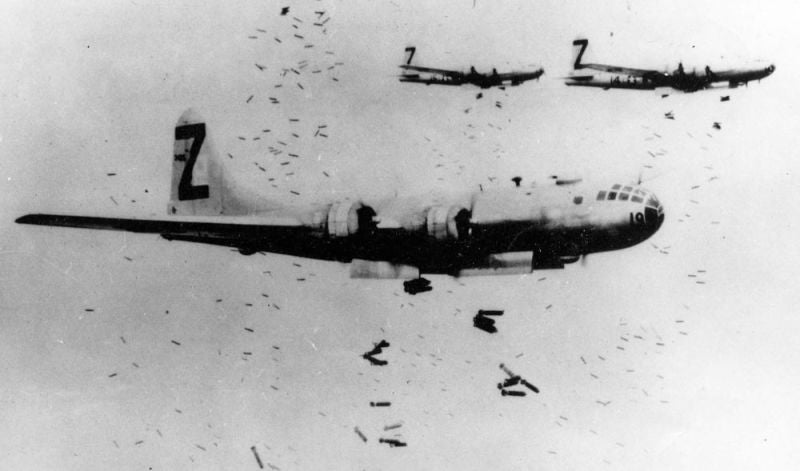
B-29s of the Twentieth Air Force drop incendiary bombs over Japan in 1945 (US Air Force)
March 9-10, 1945 – The US Army Air Forces carries out Operation Meetinghouse, the first fire bombing raids on Japan. In the closing months of WWII, the !!!error: Indecipherable SUB-paragraph formatting!!! campaign had brought the United States and its allies within striking range of the Japanese home island. Flying from hastily built or captured airfields, American bombers steadily increased the number and magnitude of strategic bombing raids against Japanese manufacturing assets in an effort to destroy the production of war materiel and to demoralize the civilian population. However, unlike European countries, where manufacturing was generally centered in large factories and industrial areas, Japan’s war production was mostly carried out in small factories scattered around the country, and in homes as a cottage industry, where individual Japanese citizens manufactured munitions on a small scale. This dispersal of manufacturing assets rendered high altitude “precision” daylight bombing raids largely ineffective.
In 1944, US Army Air Forces !!!error: Indecipherable SUB-paragraph formatting!!! , a veteran of !!!error: Indecipherable SUB-paragraph formatting!!! strategic bombing attacks against Germany, was transferred to the !!!error: Indecipherable SUB-paragraph formatting!!! theater and eventually took charge of all strategic bombing missions against Japan. A staunch advocate of !!!error: Indecipherable SUB-paragraph formatting!!! , LeMay saw that American efforts were unsuccessful because Japanese cities were often covered in clouds, making accurate targeting more difficult if not impossible. Many of the bombs dropped from high altitude were blown off course by the jet stream, and deadly air defenses ruled out large scale low-level daylight raids. To increase the effectiveness of the bombing, LeMay advocated a switch to nighttime incendiary raids. Flown from as low as 5,000-8,000 feet, these fire missions did not require great accuracy, since fires started in the cities would do more damage than traditional high explosive bombs.
For the firebombing missions, !!!error: Indecipherable SUB-paragraph formatting!!! were armed with !!!error: Indecipherable SUB-paragraph formatting!!! . A single M-69 munition weighed only six pounds, but they were dropped inside canisters that held 38 munitions each. Since air defenses were sparse by 1945, and antiaircraft artillery was less effective, all defensive armament was removed from the bombers to reduce weight and to increase the bomb load. Normally, each B-29 carried 37 canisters, totaling 1,400 individual incendiary munitions per aircraft. After they were dropped, the containers opened automatically and dispersed the smaller munitions, which ignited on contact with the ground and spread a jellied gasoline compound that was highly flammable. The Japanese capital city of Tokyo was chosen as the target for the first raid, codenamed !!!error: Indecipherable SUB-paragraph formatting!!! .
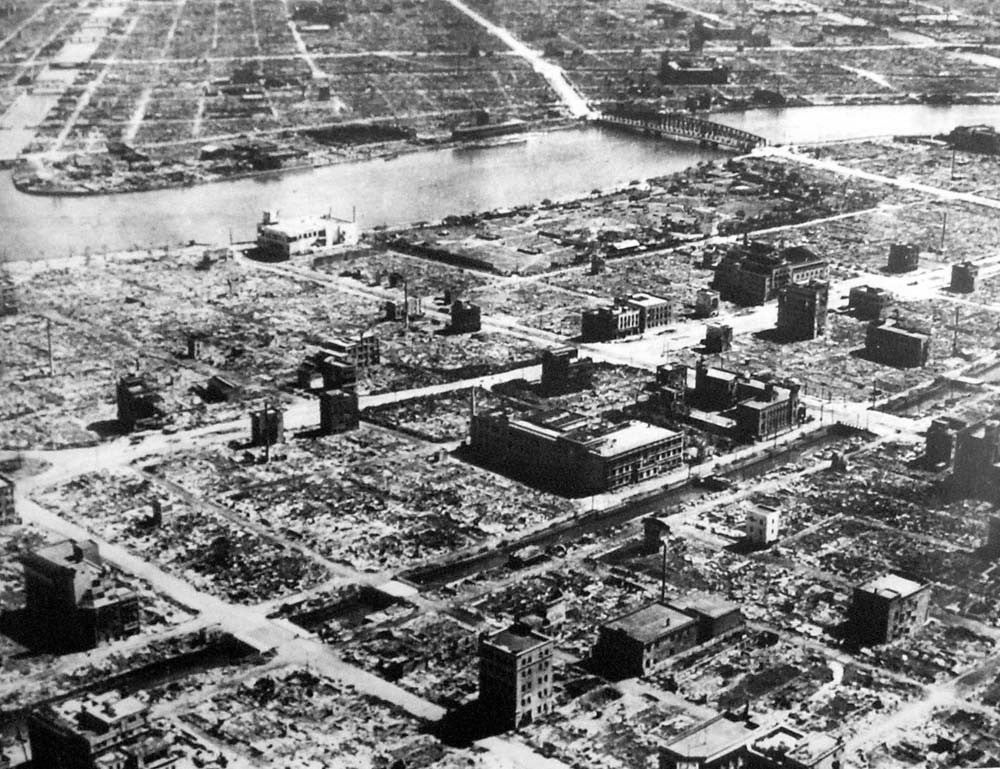
An aerial view of Tokyo following the first incendiary raid. All that remain are the concrete or stone structures. (US Air Force)
On March 9, 1945, 346 B-29s left Guam and headed for the Japanese capital. Arriving over the city at 2:00 am on March 10 (Guam time), 279 bombers dropped almost 1,700 tons of incendiaries on a city built almost entirely of wood. The resulting fires destroyed 16 square miles of buildings, or 7% of the city’s urban area. The fires burned so fiercely that many people died from suffocation as the raging firestorm consumed all the oxygen. Following the raid, Tokyo police estimated that 83,793 people were killed, 41,000 injured and another 1 million left homeless. Postwar estimates place the toll as high as 100,000 killed. The USAAF lost 14 aircraft, below the 5% loss rate that was considered acceptable.
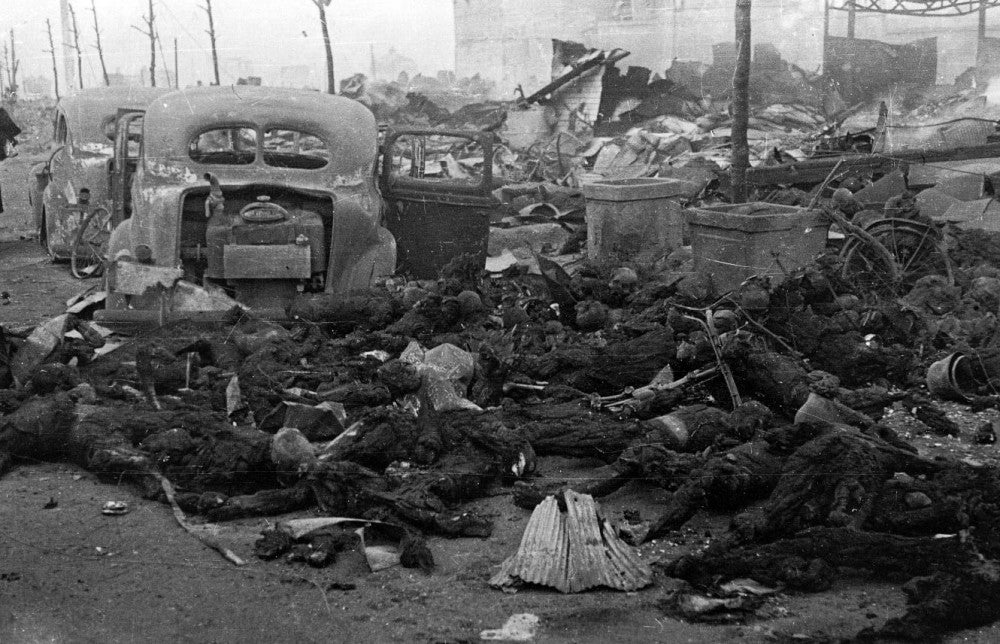 !!!CAPTION ERROR: MAY BE MULTI-LINE OR CONTAIN LINK!!!
!!!CAPTION ERROR: MAY BE MULTI-LINE OR CONTAIN LINK!!!
The firebombing raids continued in the belief that the attacks would lead the Japanese government to capitulate. They did not. According to !!!error: Indecipherable SUB-paragraph formatting!!! , the firebombing campaign caused the destruction of 180 square miles in 67 cities, and killed more than 300,000 people, a number that far exceeds the combined death toll of both the !!!error: Indecipherable SUB-paragraph formatting!!! . At the time, the US had few moral qualms about destroying such large civilian population centers. Military planners earnestly believed that these raids would shorten the war and save American lives by preventing a costly invasion of the Japanese home island. Though it was hoped that the atomic bombings of early August 1945 would finally compel the Japanese to surrender, no word was forthcoming from the Japanese government. Despite the horrors of the atomic bombs, two more firebombing raids were carried out before Japanese Emperor Hirohito finally announced Japan’s surrender on August 15, 1945, ending the Second World War.
!!! UNKNOWN CONTENT TYPE !!!
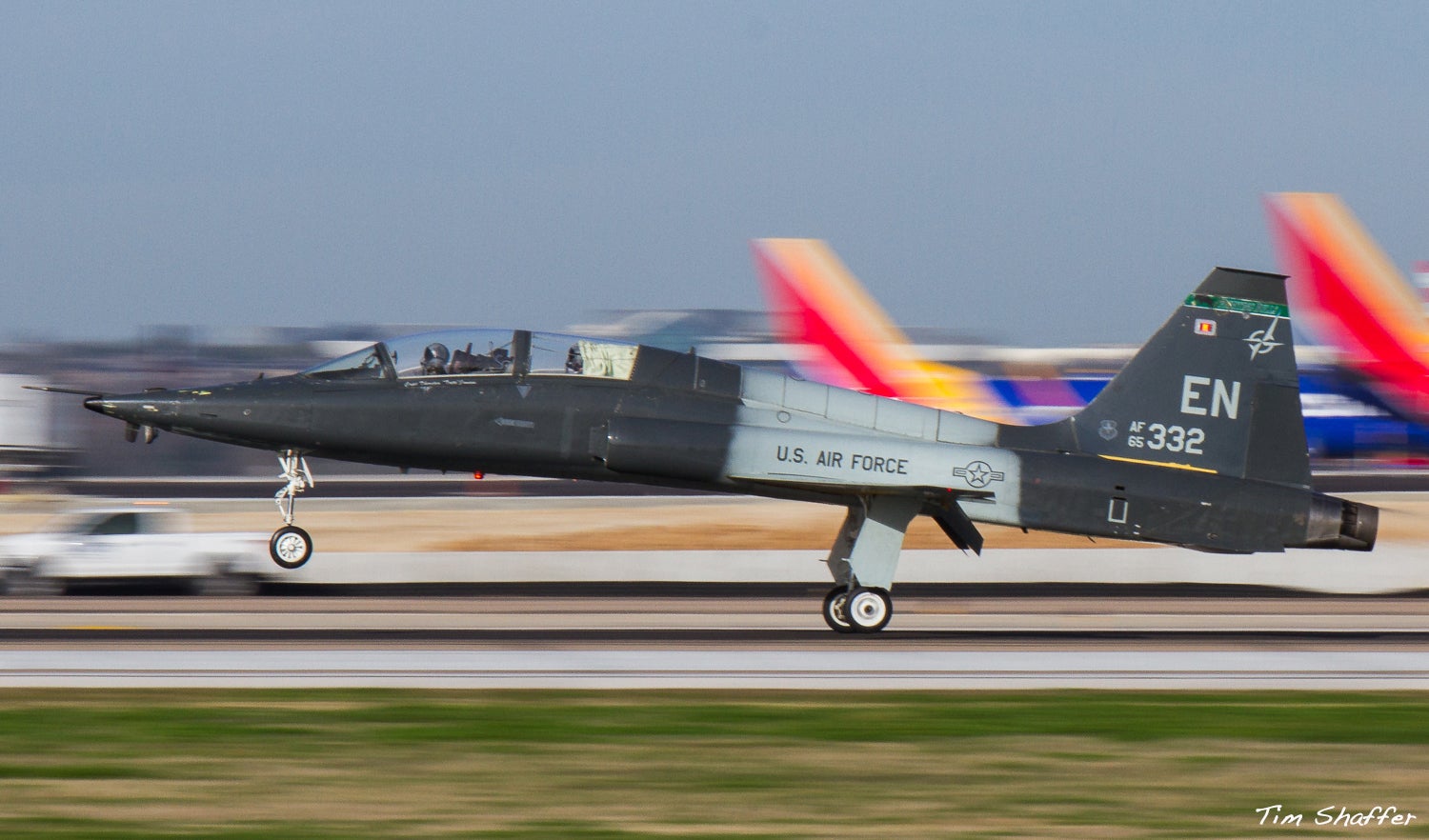
A Northrop T-38 Talon from Sheppard AFB lands at Austin-Bergstrom International Airport (Tim Shaffer)
March 10, 1959 – The first flight of the Northrop T-38 Talon. Following the birth of the jet fighter during WWII, development progressed at a rapid pace. But with that development came a trend towards increased complexity, greater size, heavier weight, and, perhaps most importantly, higher cost. In 1952, Northrop began work on a lightweight delta-winged fighter called the !!!error: Indecipherable SUB-paragraph formatting!!! , but the planned !!!error: Indecipherable SUB-paragraph formatting!!! engine alone would have weighed almost 4,000 pounds, and the program never progressed beyond preliminary drawings and a mock up. But in 1953, Northrop engineers learned of a new engine under development by General Electric that was intended for use in long-range missiles. The very small yet powerful !!!error: Indecipherable SUB-paragraph formatting!!! weighed a mere 600 pounds, yet it produced about 3,000 pounds of thrust, giving it the highest thrust-to-weight ratio of any engine in its class.
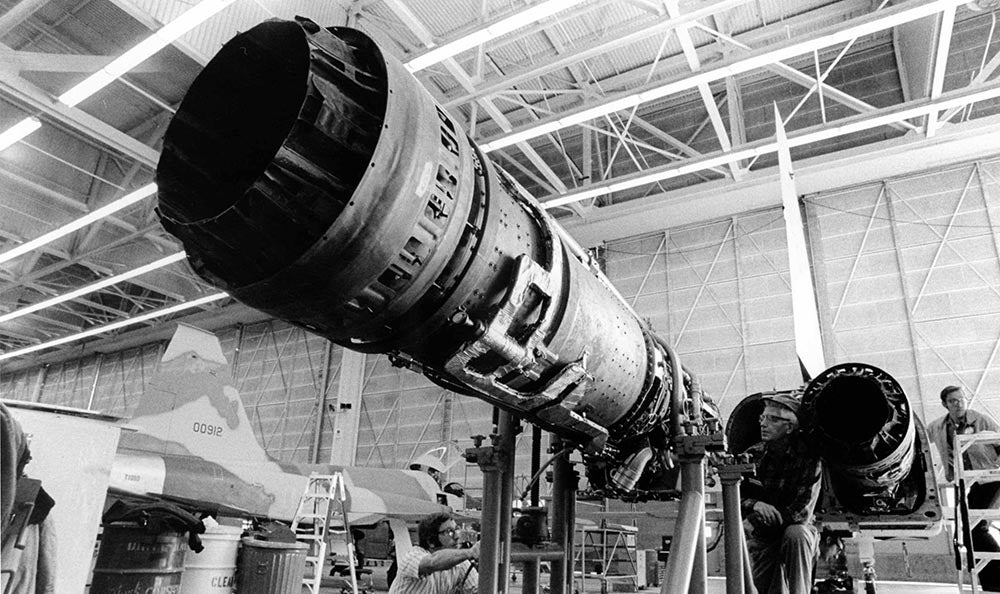 !!!CAPTION ERROR: MAY BE MULTI-LINE OR CONTAIN LINK!!!
!!!CAPTION ERROR: MAY BE MULTI-LINE OR CONTAIN LINK!!!
The Northrop design team, led by !!!error: Indecipherable SUB-paragraph formatting!!! (the man who designed the !!!error: Indecipherable SUB-paragraph formatting!!! ), saw an opportunity to buck the trend in fighter design by building a small, simple, yet extremely powerful fighter, with not one but two engines. Dubbed the N-156 by Northrop, the new fighter was initially developed for the US Navy, who planned to operate smaller fighters from the decks of !!!error: Indecipherable SUB-paragraph formatting!!! . But when the Navy decided to phase out the escort carrier, they also dropped the idea of a small fighter. Undaunted, Northrop continued with development of their new fighter, now called the N-156F, spending their own money to do so. (The N156F eventually resurfaced as the F-5 Freedom Fighter, and won the International Fighter Aircraft competition in 1970.)
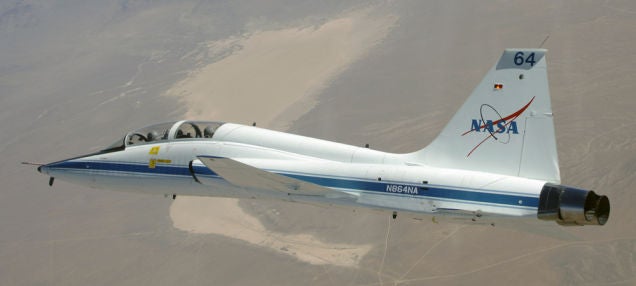
A T-38C Talon in NASA livery. NASA uses the Talon as a chase plane and for astronaut training. (NASA)
By the mid-1950s, the Air Force began looking for a two-seat, supersonic trainer to replace its aging fleet of !!!error: Indecipherable SUB-paragraph formatting!!! . In an example of perfect timing, Northrop modified the N-156 to create the N-156T trainer. Thus, where most two-seat trainers are developed from existing operational fighters, the T-38 actually predates the F-5. Following the first flight of what was now called the YT-38 Talon, the Air Force quickly adopted the new trainer in 196. The Talon went on to become the primary jet trainer for the US Air Force, and some estimates put the number of military pilots trained in the T-38 at more than 50,000. During an 11-year production run from 1961-1972, a total of 1,146 Talons were built.
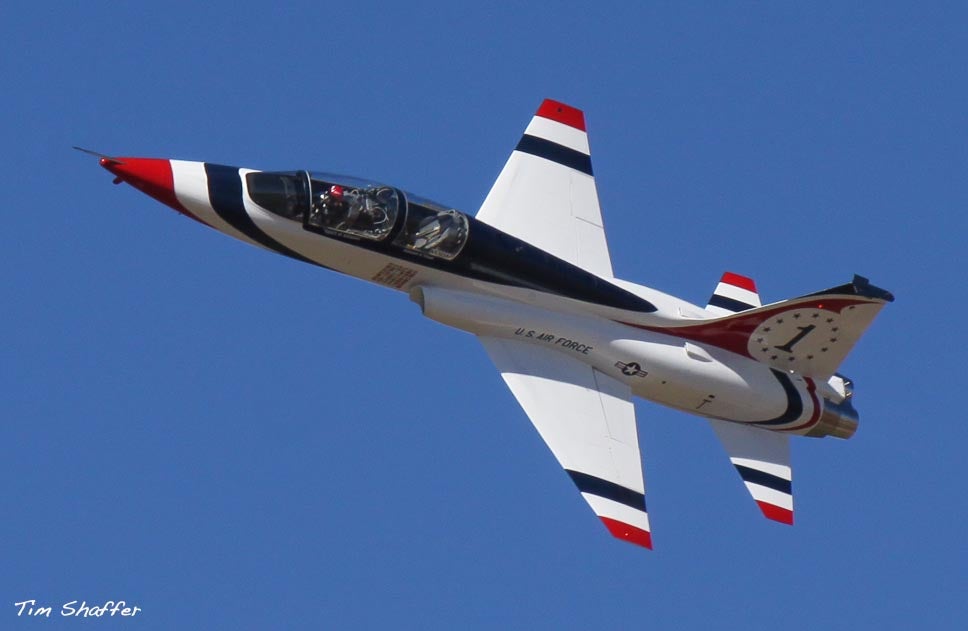
A privately-owned T-38 in US Air Force Thunderbirds livery (Tim Shaffer)
The Talon continues to be the workhorse of the US Air Force !!!error: Indecipherable SUB-paragraph formatting!!! (AETC), preparing pilots for the !!!error: Indecipherable SUB-paragraph formatting!!! and !!!error: Indecipherable SUB-paragraph formatting!!! , the !!!error: Indecipherable SUB-paragraph formatting!!! , !!!error: Indecipherable SUB-paragraph formatting!!! , !!!error: Indecipherable SUB-paragraph formatting!!! , !!!error: Indecipherable SUB-paragraph formatting!!! , !!!error: Indecipherable SUB-paragraph formatting!!! , !!!error: Indecipherable SUB-paragraph formatting!!! , and !!!error: Indecipherable SUB-paragraph formatting!!! . The T-38 was flown by the US Air Force Thunderbirds from 1974-1982 as a more fuel efficient and less expensive alternative to the !!!error: Indecipherable SUB-paragraph formatting!!! during the !!!error: Indecipherable SUB-paragraph formatting!!! , and NASA operates a small fleet Talons for astronaut flight training and for use as a chase plane. The Talon has been in service for over 50 years, and the competition to built its replacement was won by the Boeing T-X in September 2018, with initial operational capability slated for 2024. Therefore, the Talon will be flying for a while longer. Only time will tell if the T-X will be able to match the capability and affordability and longevity of the venerable T-38.
!!! UNKNOWN CONTENT TYPE !!!
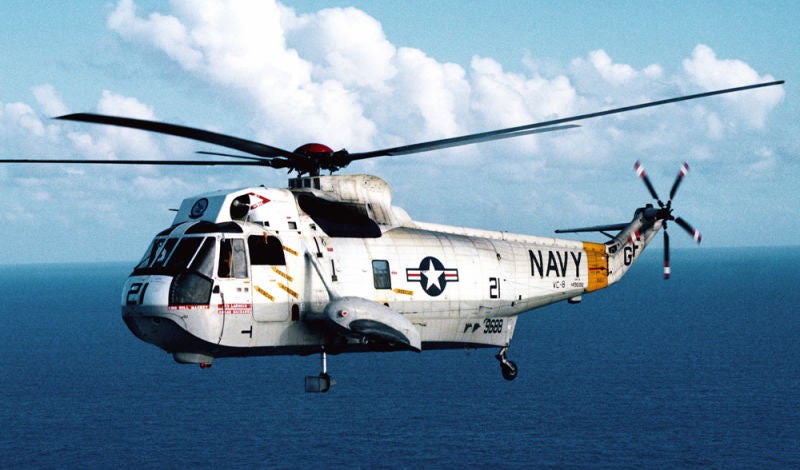
(US Navy)
March 12, 1959 – The first flight of the Sikorsky SH-3 Sea King. With its ability to sneak up virtually undetected on enemy ships, the submarine has been the scourge of naval warfare since WWI. In the days prior to radar and sophisticated tracking aircraft, it was not uncommon that the first sign of submarine attack came when lookouts spotted the telltale wake of a torpedo racing through the water. The airplane proved to be a vital tool in detecting and fighting against submarines, but their role was initially limited to observation, and they had no means to detect submarines with anything but the naked eye. By WWII, and in the years immediately after, radar and !!!error: Indecipherable SUB-paragraph formatting!!! were added to the anti-submarine arsenal, but the earliest sets were too large to fit in a single aircraft. It wasn’t until 1954 that the US Navy had a single, dedicated anti-submarine warfare (ASW) aircraft in the !!!error: Indecipherable SUB-paragraph formatting!!! .
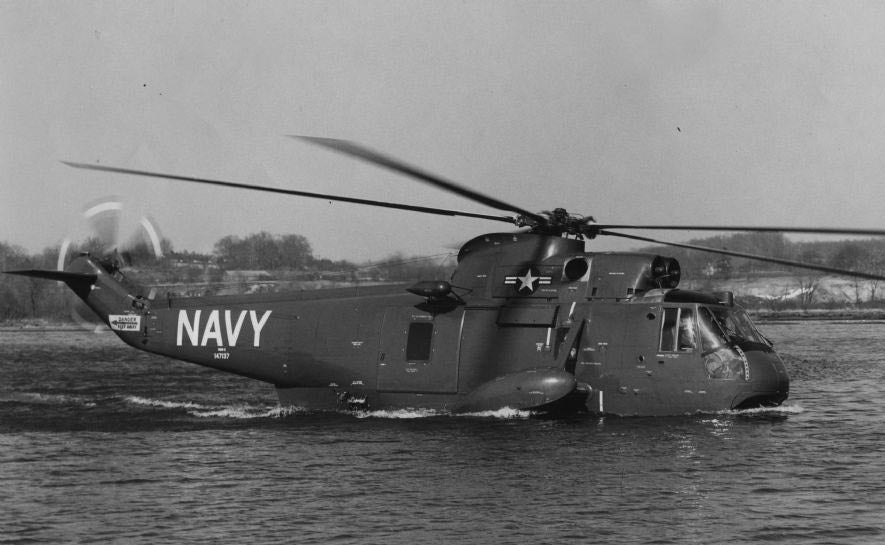
Sikorsky SH-3 Sea King prototype performing a water landing (US Navy)
However, rapid advances in turboshaft technology meant that helicopters, operating from carriers or offshore platforms could now perform the ASW mission. In 1957, the US Navy awarded a contract to Sikorsky to develop a helicopter that would combine hunter and killer capabilities into a single aircraft and help protect the American fleets and homeland from as many as 200 nuclear-armed Soviet submarines. The all-weather SH-3 had a five-bladed main rotor that was turned by a pair of !!!error: Indecipherable SUB-paragraph formatting!!! turboshaft engines that greatly improved range and power over earlier piston engines. The turboshafts carried the Sea King to a maximum speed of 166 mph, and also afforded the added safety of being able to fly on a single engine. Since the Sea King would be operating in the open ocean, it also featured a watertight hull with inflatable sponsons that allowed it to land on the surface of the water, making it the world’s first amphibious helicopter.
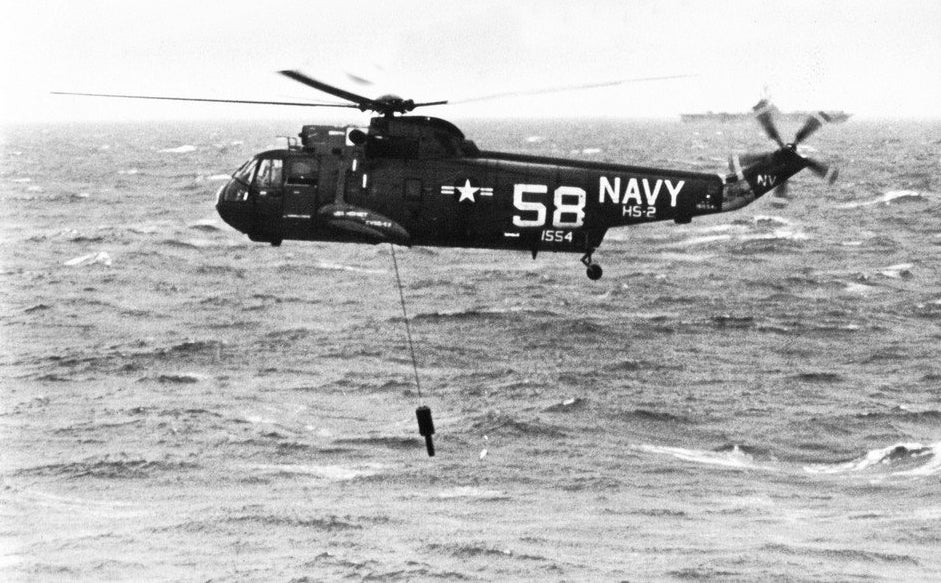
A US Navy SH-3A Sea King from Helicopter Anti-Submarine Squadron 2 (HS-2) “Golden Falcons” deploys its AN/AQS-13 dipping sonar. Note the aircraft carrier on the horizon. (US Navy)
The Sea King was introduced in 1961, the same year that the first Soviet nuclear-powers submarine ( !!!error: Indecipherable SUB-paragraph formatting!!! ) was commissioned, and carried out its ASW mission using !!!error: Indecipherable SUB-paragraph formatting!!! and a magnetic anomaly detector to find submerged submarines. A data link enable the Sea King to rapidly share information with surface ships in the fleet. Once a submarine was located, the Sea King could attack it with anti-submarine torpedoes or even the !!!error: Indecipherable SUB-paragraph formatting!!! fitted with a hydrostatic fuse which allowed it to function as a nuclear depth charge. Though the Sea King was primarily designed to find and destroy subs, it soon became a jack of all trades for the Navy, delivering cargo and transporting personnel between ships or on land. During the Vietnam War, armored Sea Kings armed with machine guns were used to rescue downed pilots, and the Sea King served as the primary recovery aircraft for the astronauts and their space capsules during the manned space programs.
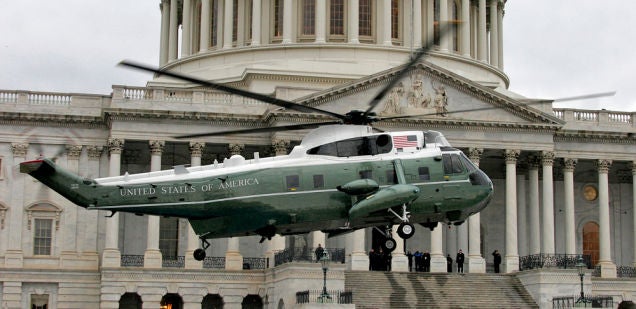
A USMC VH-3US lands at the US Capitol in Washington, DC (US Marine Corps)
By 1990, the Navy replaced the Sea King in the ASW role with the
!!!error: Indecipherable SUB-paragraph formatting!!!
, and the remaining Sea Kings were configured for logistical support and search and rescue. The SH-3 was ceremonially retired by the Navy in 2006, with official retirement taking place in 2009. Though the SH-3 no longer serves the fleet, the Marine Corps
!!!error: Indecipherable SUB-paragraph formatting!!!
continues to operate Sea King as the VH-3, known as Marine One when the President of the United States is on board. Though it has served for nearly 60 years, the VH-3 will soldier on until its replacement, the
!!!error: Indecipherable SUB-paragraph formatting!!!
, enters service. Throughout its service life, the Sea King has been constantly upgraded, and it exists in a host of variants, including those built under license by Agusta in Italy, Mitsubishi in Japan, and Westland in the United Kingdom. The H-3 was also built in a civilian version called the
!!!error: Indecipherable SUB-paragraph formatting!!!
which remains in production.
!!! UNKNOWN CONTENT TYPE !!!
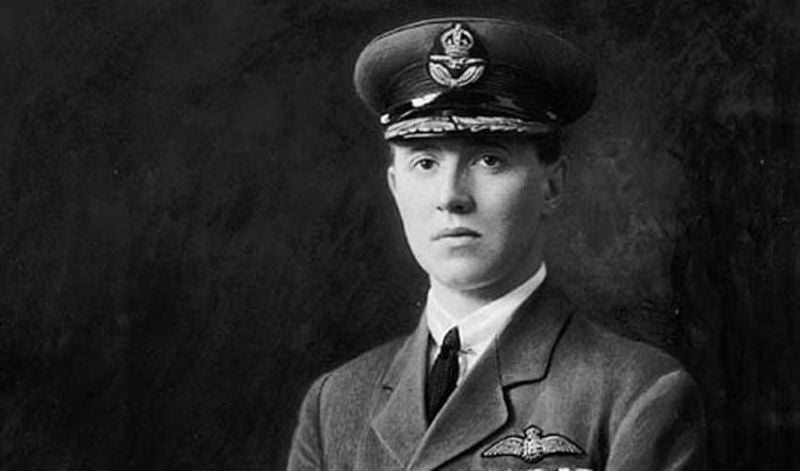
Major William G. Barker in 1918 (Library and Archives of Canada)
March 12, 1930 – The death of William George “Billy” Barker. During WWI, fighter pilots became almost mythical figures whose death-defying feats over the battlefield made them heroes who epitomized both the danger and thrill of aerial combat. While the exploits of many British, American, French and German airmen in WWI are well known, William “Billy” Barker became the most decorated serviceman in the history of Canada, as well as in the history of the British Empire and Commonwealth of Nations, though it’s very likely that only war historians and Canadians know his name.
Barker was born on November 3, 1894 in Dauphin, Manitoba, and though he wasn’t a particularly skilled pilot (he made his first solo flight after only 55 minutes of dual instruction), and suffered several incidents during his piloting career, he made up for his average flying skills with aggressiveness, audacity, and highly accurate marksmanship. Barker learned to shoot at a young age, and became an excellent shot while riding on horseback. He further honed his shooting skills as an infantry machine gunner, then joined the Air Service in 1916, flying first as an armed observer. After qualifying as a pilot, he flew 404 operational hours between September 1917 and September 1918 and shot down 46 aircraft and balloons. His personal !!!error: Indecipherable SUB-paragraph formatting!!! became the most successful individual fighter plane in the history of the Royal Flying Corps.
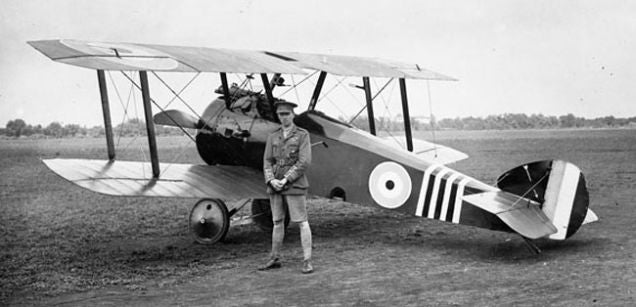
Barker with his Sopwith Camel in 1918 (Library and Archives of Canada)
For his service as a pilot, Barker was decorated numerous times, and his list of medals includes the !!!error: Indecipherable SUB-paragraph formatting!!! and !!!error: Indecipherable SUB-paragraph formatting!!! , the !!!error: Indecipherable SUB-paragraph formatting!!! and two Bars, two !!!error: Indecipherable SUB-paragraph formatting!!! , and the French !!!error: Indecipherable SUB-paragraph formatting!!! . But it was his valor “in the face of the enemy” on Sunday, October 27, 1918, that earned him the !!!error: Indecipherable SUB-paragraph formatting!!! , the highest decoration attainable in the United Kingdom (roughly equivalent to the American !!!error: Indecipherable SUB-paragraph formatting!!! ). Returning to base and flying his !!!error: Indecipherable SUB-paragraph formatting!!! fighter, Barker crossed enemy lines near the Forêt de Mormal at 21,000 feet. After downing one enemy plane, he was attacked by a formation of !!!error: Indecipherable SUB-paragraph formatting!!! . By his own admission, he was being careless and failed to see his attackers. As the battle spiraled toward the ground, Barker found himself fighting 15 or more enemy planes. He was wounded three times in the legs, and his left elbow was shattered, but he still managed to control his fighter and dispatch three more enemy planes. Wounded and bleeding seriously, Barker crash landed behind Allied lines and was taken to a field dressing station by members of an RAF Kite Balloon Section (the fuselage of his Snipe was recovered and now resides at the !!!error: Indecipherable SUB-paragraph formatting!!! in Ottawa).
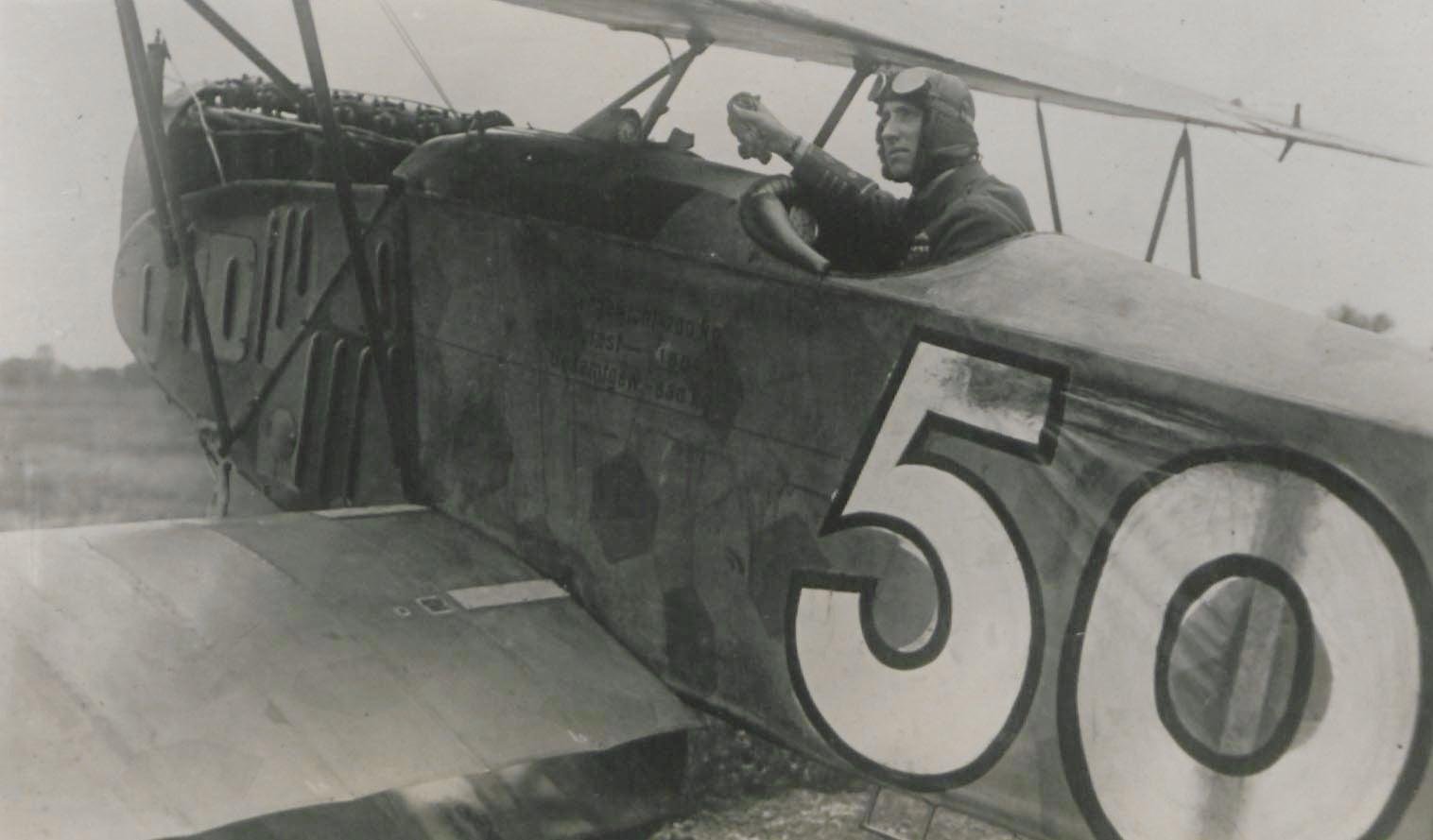
Col. William Barker sits in a German fighter that was captured after his final battle (Library and Archives of Canada)
Barker remained in hospital for three months, during which time the First World War came to an end. After the war, Barker entered into an airplane business venture with fellow fighter ace and Victoria Cross recipient !!!error: Indecipherable SUB-paragraph formatting!!! . In 1922, he returned to service as a wing commander with the fledgling !!!error: Indecipherable SUB-paragraph formatting!!! and served until 1926. Following his retirement from the RCAF, Barker became the first president of the Toronto Maple Leafs hockey club. Throughout his relatively brief postwar career, Barker struggled with both his war wounds and alcoholism. He died in 1930 after losing control of his !!!error: Indecipherable SUB-paragraph formatting!!! biplane during a demonstration flight at Rockcliffe Air Station in Ottawa, and his state funeral was attended by 50,000 mourners. Barker was just 35 years old.
!!! UNKNOWN CONTENT TYPE !!!
Short Takeoff
!!! UNKNOWN CONTENT TYPE !!!
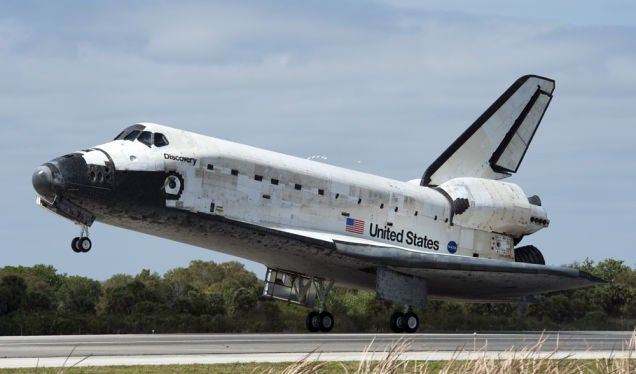
(NASA)
March 9, 2011 – Space Shuttle
Discovery
returns to Earth, marking the final mission of the first Space Shuttle to be retired by NASA.
Discovery
launched into space from the Kennedy Space Center for the last time on February 24, 2011, with a crew of six veteran astronauts to deliver the
!!!error: Indecipherable SUB-paragraph formatting!!!
, plus the humanoid robot
!!!error: Indecipherable SUB-paragraph formatting!!!
, to the
!!!error: Indecipherable SUB-paragraph formatting!!!
(ISS). The flight was the last of 39 missions spanning 27 years of service, more spaceflights than any other spacecraft to date.
Discovery
was the third orbiter to enter service after
Columbia
and
Challenger
, and made its maiden flight on August 20, 1984. All told,
Discovery
amassed more than a year in space. The retired orbiter is now on display at the Steven F. Udvar-Hazy Center near Washington, DC.
!!! UNKNOWN CONTENT TYPE !!!
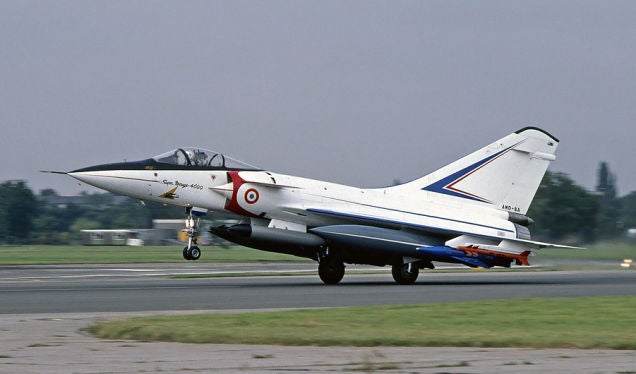 !!!CAPTION ERROR: MAY BE MULTI-LINE OR CONTAIN LINK!!!
!!!CAPTION ERROR: MAY BE MULTI-LINE OR CONTAIN LINK!!!
March 9, 1979 – The first flight of the Dassault Super Mirage 4000,
a significantly larger and heavier development of the single-engine
!!!error: Indecipherable SUB-paragraph formatting!!!
. Unlike the 2000, the 4000 had two
!!!error: Indecipherable SUB-paragraph formatting!!!
turbofan engines, as well as
!!!error: Indecipherable SUB-paragraph formatting!!!
fitted above the air intakes. The Super Mirage was begun as a private venture by Dassault and developed to compete with the
!!!error: Indecipherable SUB-paragraph formatting!!!
for lucrative export contracts. When Saudi Arabia chose to purchase the F-15, the Super Mirage project was canceled, but Dassault used much of the data gleaned from the 4000 program in the development of the
!!!error: Indecipherable SUB-paragraph formatting!!!
. Only one Mirage 4000 was built, and it now resides at the
!!!error: Indecipherable SUB-paragraph formatting!!!
in Paris.
!!! UNKNOWN CONTENT TYPE !!!
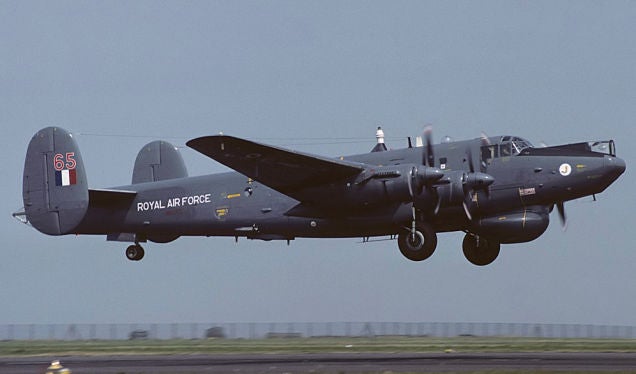 !!!CAPTION ERROR: MAY BE MULTI-LINE OR CONTAIN LINK!!!
!!!CAPTION ERROR: MAY BE MULTI-LINE OR CONTAIN LINK!!!
March 9, 1949 – The first flight of the Avro Shackleton. The Shackleton was a long-range four-engine maritime patrol aircraft that traces its lineage back to the !!!error: Indecipherable SUB-paragraph formatting!!! bomber, which itself was a development of the !!!error: Indecipherable SUB-paragraph formatting!!! bomber of WWII. Following its introduction in 1951, the Shackleton served the Royal Air Force and South African Air Force and saw action with the RAF during the !!!error: Indecipherable SUB-paragraph formatting!!! in 1956. In addition to its maritime surveillance role, the Shackleton also served as a search and rescue platform, with one aircraft crew remaining on alert at all times should it be needed to respond to an emergency. A total of 185 Shackletons were built between 1951-1958, and it was retired from service in 1991.
!!! UNKNOWN CONTENT TYPE !!!
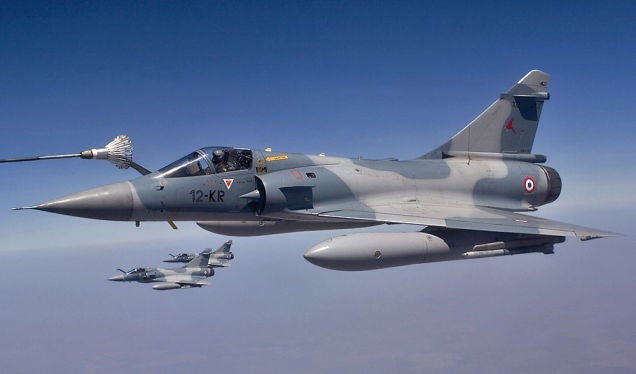 !!!CAPTION ERROR: MAY BE MULTI-LINE OR CONTAIN LINK!!!
!!!CAPTION ERROR: MAY BE MULTI-LINE OR CONTAIN LINK!!!
March 10, 1978 – The first flight of the Dassault Mirage 2000. Based on the delta wing !!!error: Indecipherable SUB-paragraph formatting!!! , the Mirage 2000 was developed in the 1970s as a lightweight fighter to compete with the !!!error: Indecipherable SUB-paragraph formatting!!! for the export market. Since the Mirage 2000 was based on an existing successful aircraft, the prototype was ready for its first flight in just 27 months.. The Mirage 2000 entered service in November of 1982, and just over 600 examples were produced, with many sold to Dassault’s export customers. The type saw service with the French during the !!!error: Indecipherable SUB-paragraph formatting!!! and in Afghanistan, and it remains in service today, though it is currently being phased out in favor of the !!!error: Indecipherable SUB-paragraph formatting!!! .
!!! UNKNOWN CONTENT TYPE !!!
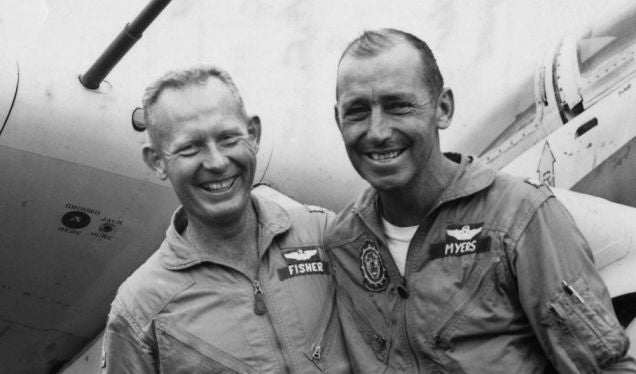
(US Air Force)
US March 10, 1966 – US Air Force Maj. Bernard “Bernie” Fisher earns the Congressional Medal of Honor. Fisher was leading a two-ship element of !!!error: Indecipherable SUB-paragraph formatting!!! , part of six aircraft supporting US troops in the !!!error: Indecipherable SUB-paragraph formatting!!! in Vietnam. One of the Skyraiders, piloted by Maj. D.W. “Jump” Myers was hit and forced to land on an airstrip belonging to South Vietnamese militia ( !!!error: Indecipherable SUB-paragraph formatting!!! ) and US Special Forces that was under enemy attack at the time. With the closest rescue helicopter at least 3o minutes away, Fisher landed his Skyraider under heavy enemy fire and picked up the downed pilot. Dodging craters and debris on the runway, Fisher took off, his Skyraider riddled with holes from small arms fire. For his actions, Maj. Fisher was awarded the !!!error: Indecipherable SUB-paragraph formatting!!! , becoming the first member of the US Air Force to receive the decoration in the Vietnam War.
!!! UNKNOWN CONTENT TYPE !!!
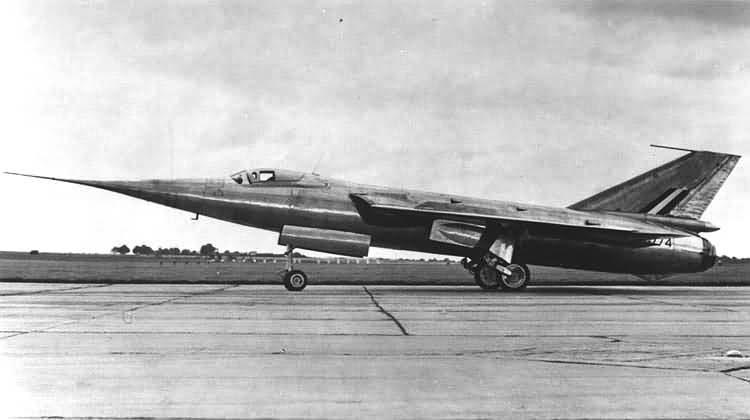 !!!CAPTION ERROR: MAY BE MULTI-LINE OR CONTAIN LINK!!!
!!!CAPTION ERROR: MAY BE MULTI-LINE OR CONTAIN LINK!!!
March 10, 1956 – Lt. Cdr. Peter Twiss, flying a Fairey Delta 2, becomes the first pilot to exceed 1,000 miles per hour. The Fairey Delta 2 was an experimental aircraft built to explore flight in the transonic and supersonic regimes. The delta-wing aircraft with a droop nose, an arrangement that would later be used on the supersonic !!!error: Indecipherable SUB-paragraph formatting!!! airliner, took its maiden flight on October 6, 1945, and the two test aircraft made numerous supersonic test flights, including supersonic flights without afterburner, or reheat. Lt. Cdr. Twiss shattered the speed record held at the time by a !!!error: Indecipherable SUB-paragraph formatting!!! when he at 1,132 mph, or Mach 1.73. The Delta 2 held the record for more than a year before it was broken by a !!!error: Indecipherable SUB-paragraph formatting!!! . The two Delta 2 aircraft continued their testing duties, and and were retired in 1966 (WG777) and 1973 (WG774).
!!! UNKNOWN CONTENT TYPE !!!
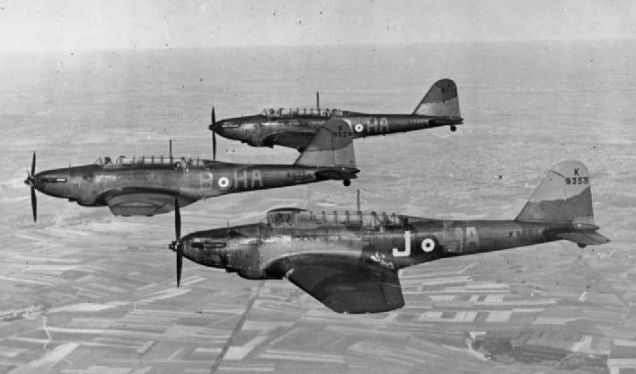
(UK Government)
March 10, 1936 – The first flight of the Fairey Battle.
The Battle was originally conceived as a replacement for older biplane bombers but, even though it was powered by the same
!!!error: Indecipherable SUB-paragraph formatting!!!
V-12 engine used in some of the most successful aircraft of WWII, it was severely hampered by its size and weight. While the Battle was a significant improvement over the biplanes it replaced, it was completely obsolete by the outbreak of WWII. In addition to its lack of speed and average handling, the Battle also lacked an armored cockpit and self-sealing fuel tanks, making it vulnerable to antiaircraft fire and Luftwaffe fighters. Nevertheless, Battles saw extensive, if somewhat futile, service in the early days of the war, but were withdrawn from frontline service by the end of 1941.
!!! UNKNOWN CONTENT TYPE !!!
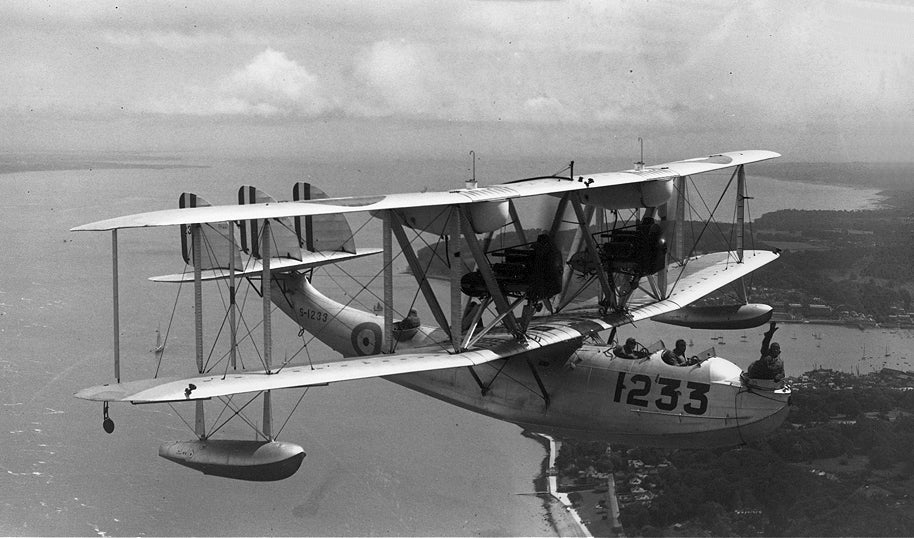
(UK Government)
March 10, 1925 – The first flight of the Supermarine Southampton, one of the most successful flying boats of the period between the World Wars. The Southampton was developed from the earlier !!!error: Indecipherable SUB-paragraph formatting!!! and was designed by !!!error: Indecipherable SUB-paragraph formatting!!! , who would later become famous for his design of the !!!error: Indecipherable SUB-paragraph formatting!!! . Based on the success of the Swan, the Southampton was ordered into production straight from the drawing board, and a total of 83 were produced from 1924-1934. Following its delivery to the RAF in 1925, the Southampton took on its principal role of maritime reconnaissance. The Mark I was fitted with a pair of !!!error: Indecipherable SUB-paragraph formatting!!! engines which gave it a top speed of 95 mph and a range of 544 miles, or a little more than six hours in the air, though later variants received a variety of powerplants.
!!! UNKNOWN CONTENT TYPE !!!
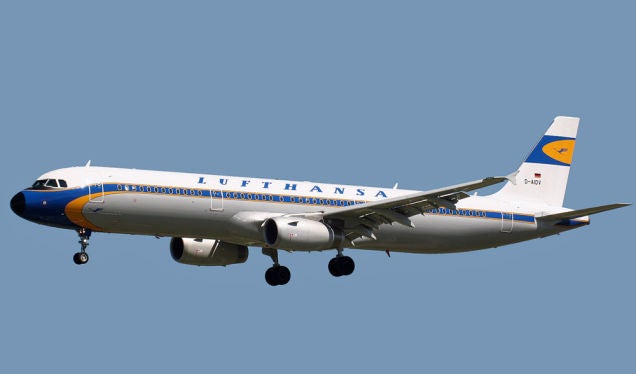 !!!CAPTION ERROR: MAY BE MULTI-LINE OR CONTAIN LINK!!!
!!!CAPTION ERROR: MAY BE MULTI-LINE OR CONTAIN LINK!!!
March 11, 1993 – The first flight of the Airbus A321.
When Airbus first conceived the
!!!error: Indecipherable SUB-paragraph formatting!!!
airliner, they envisioned an entire line of aircraft, each one larger or smaller and tailored to the needs of individual airlines. The A321 was the first derivative of the A320 and features a fuselage stretched almost 22 feet by the addition of one section just forward of the wing and a second section at the rear, allowing for 35 more passengers in a typical 2-class configuration. The A321 also has a greater maximum takeoff weight (MTOW), though its range is slightly less than the A320. This deficiency was addressed in the A321-200, which has additional fuel capacity and more powerful engines. A further development, the
!!!error: Indecipherable SUB-paragraph formatting!!!
(new engine option), entered service in 2017.
!!! UNKNOWN CONTENT TYPE !!!
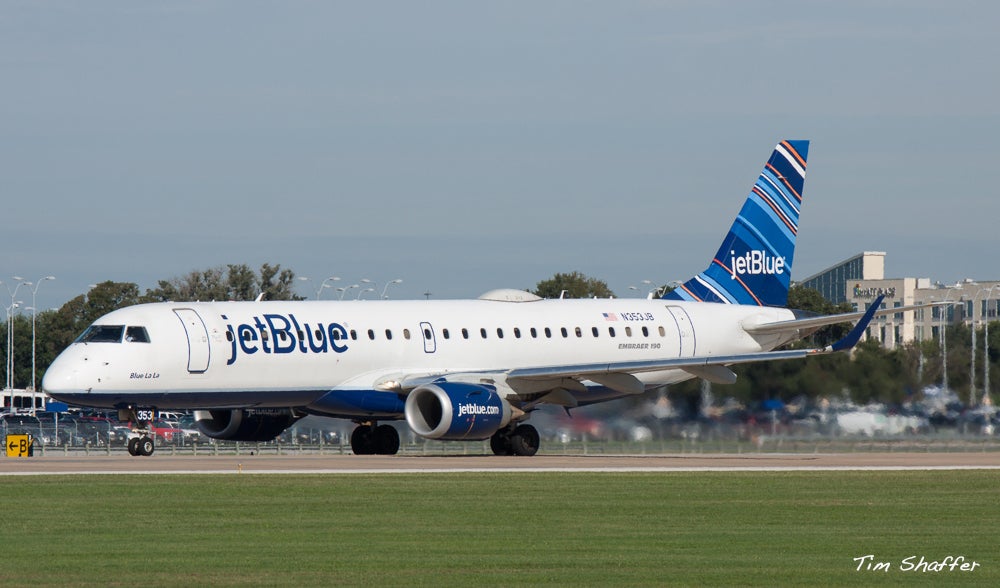
March 12, 2004 – The first flight of the Embraer ERJ-190, a member of the Embraer !!!error: Indecipherable SUB-paragraph formatting!!! family of medium-range airliners produced by the Brazilian aerospace conglomerate !!!error: Indecipherable SUB-paragraph formatting!!! . The E190 was the first stretched variant of the original !!!error: Indecipherable SUB-paragraph formatting!!! , and features a larger wing and stabilizer plus new !!!error: Indecipherable SUB-paragraph formatting!!! turbofan engines. With accommodation for 96-114 passengers depending on configuration, the E190, and slightly larger E195, are positioned to compete with the !!!error: Indecipherable SUB-paragraph formatting!!! and !!!error: Indecipherable SUB-paragraph formatting!!! , the !!!error: Indecipherable SUB-paragraph formatting!!! and !!!error: Indecipherable SUB-paragraph formatting!!! , and the !!!error: Indecipherable SUB-paragraph formatting!!! .
!!! UNKNOWN CONTENT TYPE !!!
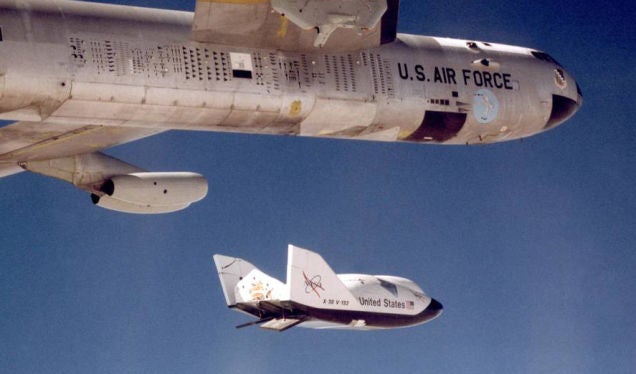
(NASA)
March 12, 1998 – The first free flight of the NASA X-38, a crew return vehicle (CRV) that was designed to evacuate up to seven astronauts from the !!!error: Indecipherable SUB-paragraph formatting!!! (ISS) in the case of serious illness, fire, collision with space debris, or the grounding of the !!!error: Indecipherable SUB-paragraph formatting!!! . Built by !!!error: Indecipherable SUB-paragraph formatting!!! , the X-38 was based on lifting body technology developed in the 1960s and was of a similar shape to the !!!error: Indecipherable SUB-paragraph formatting!!! . The X-38 was to be semi-permanently docked to the ISS until needed, then re-enter the Earth’s atmosphere and land using a !!!error: Indecipherable SUB-paragraph formatting!!! . Two atmospheric prototypes were built and used for drop tests, along with one orbital prototype that was 90% complete, before severe budget cuts caused the cancellation of the program in 2002.
!!! UNKNOWN CONTENT TYPE !!!
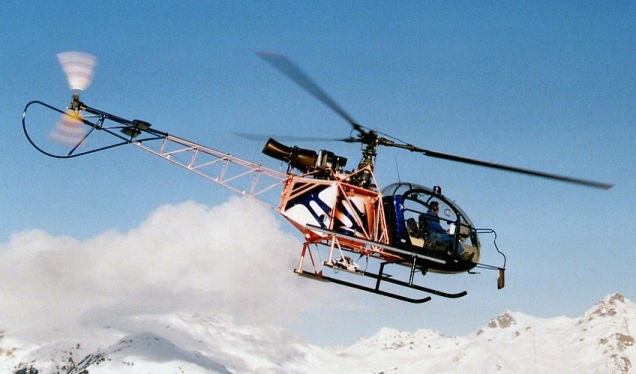 !!!CAPTION ERROR: MAY BE MULTI-LINE OR CONTAIN LINK!!!
!!!CAPTION ERROR: MAY BE MULTI-LINE OR CONTAIN LINK!!!
March 12, 1955 – The first flight of the Aérospatiale Alouette II, a light observation, liaison, reconnaissance and air-sea rescue helicopter originally manufactured by !!!error: Indecipherable SUB-paragraph formatting!!! and the first helicopter to make use of a gas turbine engine rather than a heavier piston engine. In addition to its civilian duties, the Alouette II was converted to a gunship carrying anti-tank missiles or torpedoes. The Alouette II demonstrated its high altitude capabilities in 1956 when it performed the first mountain rescue of a stricken climber from more than 13,000 feet of elevation. The Alouette II was widely exported and, by the end of production in 1975, over 1,300 aircraft had been built.
!!! UNKNOWN CONTENT TYPE !!!
Connecting Flights
!!! UNKNOWN CONTENT TYPE !!!
!!! UNKNOWN CONTENT TYPE !!!
!!! UNKNOWN CONTENT TYPE !!!
!!! UNKNOWN CONTENT TYPE !!!
!!! UNKNOWN CONTENT TYPE !!!
If you enjoy these Aviation History posts, please let me know in the comments. And if you missed any of the past articles, you can find them all at
!!!error: Indecipherable SUB-paragraph formatting!!!
. You can also find more stories about aviation, aviators and airplane oddities at
!!!error: Indecipherable SUB-paragraph formatting!!!
.
!!! UNKNOWN CONTENT TYPE !!!
 CarsofFortLangley - Oppo Forever
> ttyymmnn
CarsofFortLangley - Oppo Forever
> ttyymmnn
03/12/2019 at 12:42 |
|
That firebomb video was interesting. That one dude was having way too much fun with the cheesecloth
 Bman76 (hates WS6 hoods, is on his phone and has 4 burners now)
> ttyymmnn
Bman76 (hates WS6 hoods, is on his phone and has 4 burners now)
> ttyymmnn
03/12/2019 at 13:22 |
|
Doc fully opened to the public today with regular hours.
 ttyymmnn
> Bman76 (hates WS6 hoods, is on his phone and has 4 burners now)
ttyymmnn
> Bman76 (hates WS6 hoods, is on his phone and has 4 burners now)
03/12/2019 at 13:32 |
|
Wish I could come see it! Will Doc be on the air show circuit this year?
 Bman76 (hates WS6 hoods, is on his phone and has 4 burners now)
> ttyymmnn
Bman76 (hates WS6 hoods, is on his phone and has 4 burners now)
> ttyymmnn
03/12/2019 at 14:10 |
|
Definitely, they’ll be out at airshows every weekend once they start happening in the spring.
 ttyymmnn
> Bman76 (hates WS6 hoods, is on his phone and has 4 burners now)
ttyymmnn
> Bman76 (hates WS6 hoods, is on his phone and has 4 burners now)
03/12/2019 at 14:26 |
|
Do you have a schedule of appearances ? Or is there one online?
 TheRealBicycleBuck
> ttyymmnn
TheRealBicycleBuck
> ttyymmnn
03/12/2019 at 14:42 |
|
A few videos are appropriate here. First is a reflection on the losses in WWII.
The next few are a little more lighthearted. I happened to watch these last night. Here’s a Sopwith Snipe startup and flight:
Next up, a Camel:
Finally, a dogfight!
 Bman76 (hates WS6 hoods, is on his phone and has 4 burners now)
> ttyymmnn
Bman76 (hates WS6 hoods, is on his phone and has 4 burners now)
> ttyymmnn
03/12/2019 at 16:53 |
|
Doc’s website probably has them if they’ve been announced. Not sure if they have
 ttyymmnn
> Bman76 (hates WS6 hoods, is on his phone and has 4 burners now)
ttyymmnn
> Bman76 (hates WS6 hoods, is on his phone and has 4 burners now)
03/12/2019 at 17:04 |
|
Thanks, I’ll check. I’ve already got all the TX shows in my calendar. :D